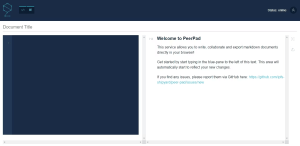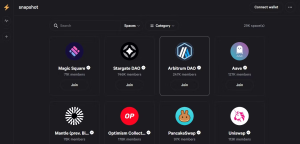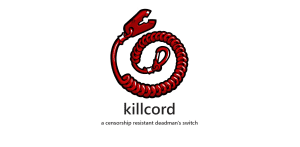Introduction: Decentralizing Web for Freedom and Resilience
In an age where the internet is deeply ingrained in our lives, understanding its fundamental workings is essential. Traditional websites, centralized and vulnerable to censorship, are undergoing a transformation. The emergence of Decentralized Web sites promises to bring about a new era, one with less censorship and more uptime. But what exactly is a decentralized website, and how does the decentralized web operate? In this article, we embark on a journey to unravel the mysteries of this evolving internet landscape.
1. What Is a Decentralized Web site?
A decentralized website is not your typical website hosted on centralized servers. Instead, it resides on a network of independent nodes, a game-changer in terms of resilience and censorship resistance. While traditional websites depend on a small group of well-funded companies for hosting, decentralized web hosting spreads data across a global network, making censorship practically impossible.
2. How Does a Decentralized Website Work?
The core difference lies in how data is stored. Decentralized websites break files into bits and distribute them across a network of computers. Protocols like IPFS use peer-to-peer networking and cryptographic hashing to ensure data integrity. This revolutionary approach significantly reduces the risk of single-point failures and guarantees the authenticity of the websites you visit.
3. Examples of Decentralized Websites
Decentralized websites exist to take advantage of the benefits of decentralized hosting. Here are some practical examples.
1. PeerPad

PeerPad is an online platform that offers a seamless and user-friendly experience for users to create, collaborate on, and export Markdown documents, all within a web browser. Much like Google Docs, PeerPad empowers users to harness the power of Markdown language without needing specialized software or installations.
2. Snapshot
Snapshot is a decentralized voting platform for Web3 projects, DAOs, and online communities. It employs “off-chain voting,” wherein the cryptographic signatures that validate user votes are securely recorded and maintained on IPFS instead of clogging up the supported blockchains with these data points.

3. Killcord
Killcord is a censorship-resistant website for creating switches used to release encrypted data securely. Killcord relies on Ethereum and IPFS. The owner of the Killcord project maintains a confidential key from public view by regularly interacting with a smart contract.
If they cease interaction for a predefined duration, the Killcord mechanism is activated, leading to the publication of the secret key required for decrypting the encrypted data.

4. Advantages of Decentralized Websites
Discover the numerous advantages offered by decentralized websites, including increased security, censorship resistance, network resilience, and enhanced privacy. Dive into the benefits of global accessibility, monetization opportunities, and platform governance.
5. Disadvantages of Decentralized Websites
No innovation comes without its challenges. Learn about the limitations of decentralized websites, including their limited user base, user experience issues, and content moderation struggles. These challenges are vital to understand as the decentralized web evolves.
6. Decentralized Websites Will Become More Common
As the internet’s landscape shifts, the rise of decentralized websites is inevitable. Factors like distributed ledger technologies, the growth of Web3, and concerns about online privacy and censorship drive this transformation. We explore the possibilities of a hybrid internet, where centralized and decentralized components coexist harmoniously.
Conclusion: Embracing a Decentralized Future
In closing, the decentralized web is not just a buzzword; it’s a movement reshaping the internet as we know it. Decentralized websites offer us a glimpse into a future where information flows freely, securely, and without fear of censorship. As developers continue to address the challenges, we can anticipate a digital landscape where decentralization becomes the norm, ensuring a more open and resilient internet for all.
As we embark on this journey into the decentralized web, we invite you to explore, learn, and be part of a future where the internet truly belongs to the people. Welcome to the decentralized revolution.












